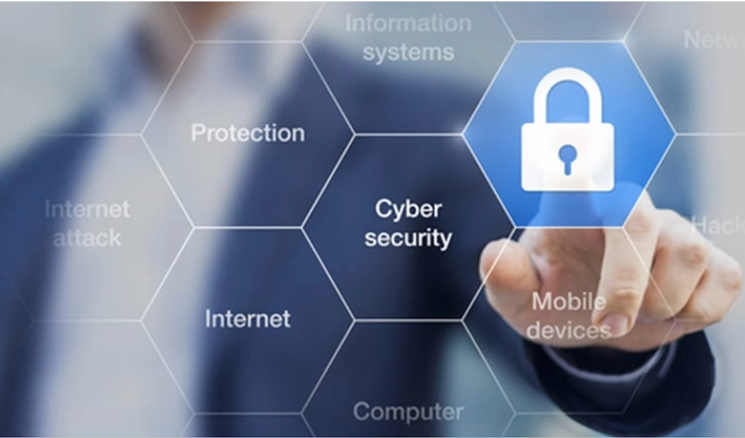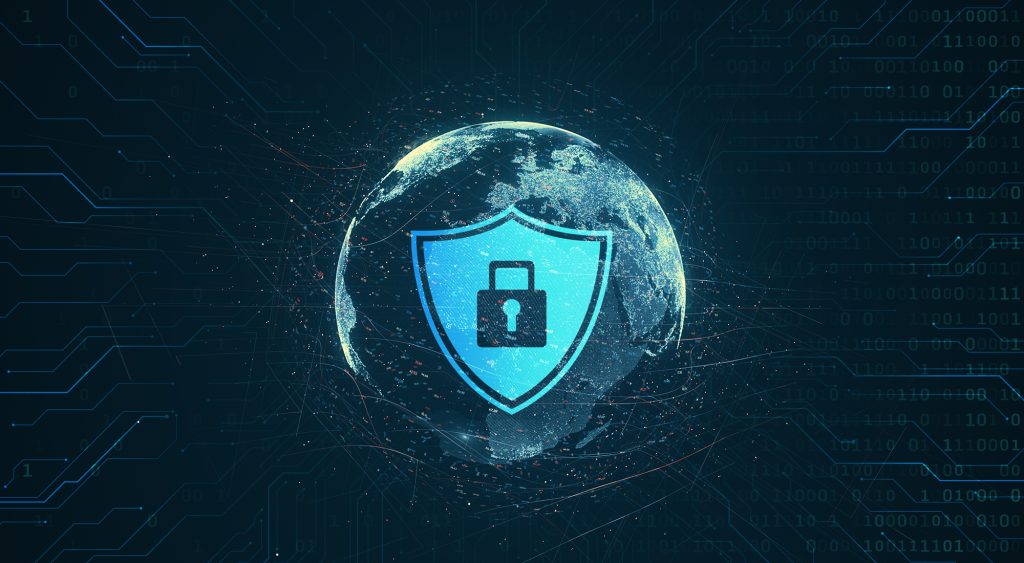
15 core cyber securityntroduction
15 core cyber security Every 39 seconds, a cyber attack hits an internet user. That’s not a random number – it’s your digital reality in 2024.
Security breaches cost companies $4.45 million on average. But here’s what’s interesting: Most of these attacks could have been prevented with basic cyber security knowledge. This is exactly why more people are asking what cybersecurity courses are all about.
A good cyber security course is like a digital self-defense class. You learn to spot threats before they become problems. You master the tools to protect data. You develop skills to respond when (not if) an attack happens.
I’ve spent 15 years teaching cybersecurity. In that time, I’ve seen thousands of students transform from complete beginners into confident security professionals. The secret? They all mastered 15 core topics that form the backbone of every solid cybersecurity program.
These topics aren’t just theory. They’re the exact skills companies look for when hiring security professionals. Whether you’re a complete beginner or looking to switch careers, understanding these 15 core areas will give you a clear path forward.
The best part? You don’t need to be a computer genius to learn them. You just need curiosity and dedication. Let’s look at what makes these 15 topics essential for anyone serious about cyber security.
Core Fundamentals of Cyber Security Training
TL;DR:
- Learn network security, OS protection, and cryptography basics
- Understand real attack scenarios and defense strategies
- Master security configurations across different operating systems
1. Network Security Basics
Network security forms the first line of defense in protecting digital assets. The TCP/IP protocol suite serves as the backbone of modern network communications. It consists of four layers: Application, Transport, Internet, and Network Access. Each layer presents unique security challenges.
Firewalls act as critical checkpoints between networks. They filter traffic based on predefined rules. Modern firewalls go beyond simple packet filtering. They now include deep packet inspection (DPI) and application-level filtering. According to recent data, 98% of web applications are vulnerable to attacks that can result in malware or redirection to malicious websites.
Virtual Private Networks (VPNs) create encrypted tunnels between networks. They’re essential for remote work security. VPNs use protocols like IPSec and OpenVPN. The choice between these protocols depends on specific security needs and performance requirements.
Real-World Network Attack Prevention
Common network attacks include:
- DDoS (Distributed Denial of Service)
- Man-in-the-Middle attacks
- SQL injection
- Cross-site scripting (XSS)
Prevention strategies must include regular security audits, network segmentation, and intrusion detection systems (IDS). As Bruce Schneier notes, “People often represent the weakest link in the security chain and are chronically responsible for the failure of security systems.”
2. Operating System Security
Each operating system requires specific security approaches. Windows systems need particular attention to Group Policy settings and Windows Defender configurations. Linux systems focus on file permissions and user access controls. MacOS systems combine Unix security foundations with Apple’s security features.
System hardening reduces the attack surface by:
- Removing unnecessary services
- Applying security patches
- Implementing strict access controls
- Configuring audit logging
Best practices include regular vulnerability scanning and compliance checking. The CIS (Center for Internet Security) benchmarks provide detailed guidelines for each operating system.
3. Cryptography Foundations
Modern cryptography uses both symmetric and asymmetric encryption. Symmetric encryption uses the same key for encryption and decryption. It’s faster but key distribution is challenging. Asymmetric encryption uses public-private key pairs, solving the key distribution problem but requiring more computational power.
Public Key Infrastructure (PKI) manages digital certificates and encryption keys. It includes:
- Certificate Authorities (CAs)
- Registration Authorities (RAs)
- Digital certificates
- Certificate revocation lists
For deeper study, “Applied Cryptography” by Bruce Schneier remains a fundamental text. The book “Cryptography Engineering” by Ferguson, Schneier, and Kohno offers practical implementation guidance.

Advanced Implementation Concepts
Hash functions like SHA-256 and SHA-3 provide data integrity checking. Digital signatures combine hashing and asymmetric encryption for non-repudiation. These concepts form the basis of blockchain technology and secure communications.
A solid understanding of these fundamentals helps answer “What exactly does cyber security do?” At its core, cyber security protects digital assets through:
- Preventing unauthorized access
- Maintaining data integrity
- Ensuring system availability
- Protecting user privacy
The field requires technical skills in networking, programming, and system administration. It also demands analytical thinking and continuous learning due to evolving threats.
recommendation
🪄 Add a recent case study of a major security breach with specific statistics on how proper training could have prevented it. Include 2-3 industry certification recommendations (like CompTIA Security+, CISSP) with average salary data.
🌁 Create an infographic showing the layered security approach (network, OS, cryptography) with icons and brief descriptions. Add a simple flowchart demonstrating the typical attack vector of a phishing attempt.
🚀 Add bullet points at the start of each major section summarizing key learning outcomes
🚀 Include a ‘Tools & Resources’ box at the end of each section listing recommended security tools and learning platforms
🕒 15 minutes
Essential Cyber Security Course Curriculum Structure
TL;DR:
- A structured cyber security course builds deep knowledge in 6 key areas
- Risk assessment, information security, and data protection form the core
- Students learn both theory and hands-on skills through case studies
4. Security Risk Assessment
Risk assessment starts with understanding the NIST Risk Management Framework (RMF). Organizations use this framework to identify, measure, and respond to security risks. The process involves six steps: categorize, select, implement, assess, authorize, and monitor.
The FAIR (Factor Analysis of Information Risk) model adds depth to risk assessment by quantifying risks in financial terms. This helps security professionals communicate with business leaders. For example, a data breach’s potential cost includes direct losses, legal fees, and reputation damage. The book “Measuring and Managing Information Risk” by Jack Freund provides detailed insights into FAIR implementation.
System Vulnerability Analysis
Vulnerability scanning tools like Nessus, OpenVAS, and Qualys help identify system weaknesses. But the real skill lies in interpreting scan results. Security professionals must understand false positives, prioritize fixes, and consider business impact.
A comprehensive vulnerability management program includes:
- Weekly automated scans
- Monthly manual assessments
- Quarterly penetration tests
- Annual red team exercises
5. Information Security Management
ISO 27001 sets the standard for information security management systems (ISMS). The framework covers 114 controls across 14 domains. Small businesses might find ISO 27001 overwhelming, but they can start with basic controls and grow.
Security policies need regular updates. The SANS Institute recommends reviewing policies every 6-12 months. Their policy templates serve as excellent starting points for organizations.

Incident Response Planning
The SANS Institute’s “Incident Handler’s Handbook” outlines six phases:
- Preparation
- Identification
- Containment
- Eradication
- Recovery
- Lessons Learned
Organizations should run tabletop exercises monthly. These simulations test response plans without disrupting operations.
6. Data Protection Techniques
Data classification follows sensitivity levels:
- Public
- Internal
- Confidential
- Restricted
Each level needs specific protection controls. The book “Data Classification: A Security Analysis” by Michael Sikorski explains implementation strategies.
Backup Strategies
The 3-2-1 backup rule remains standard:
- 3 copies of data
- 2 different media types
- 1 off-site copy
Modern additions include:
- Immutable backups
- Air-gapped systems
- Ransomware-resistant storage
7. Cloud Security Architecture
Cloud security demands understanding shared responsibility models. AWS, Azure, and GCP each have unique security features and limitations.
The Cloud Security Alliance (CSA) provides the Cloud Controls Matrix (CCM). This tool helps organizations assess cloud provider security. The CCM maps to major compliance frameworks like GDPR and HIPAA.
8. Application Security
OWASP Top 10 forms the foundation of application security training. But modern courses must cover API security and container security too.
Secure development lifecycle (SDL) practices include:
- Threat modeling
- Code reviews
- Security testing
- Dependency Scanning
The book “The Art of Software Security Assessment” by Mark Dowd remains relevant despite its age. Its principles apply to modern development practices.
recommendation
🪄 Add global cybersecurity spending statistics from Gartner’s latest report, showing market relevance and job opportunities. Include average salary data for key cybersecurity roles from industry surveys.
🌁 Create a hierarchical flowchart showing how the 6 key areas interconnect in the cybersecurity curriculum. Add an infographic showing the NIST RMF six steps with icons and brief descriptions.
🚀 Add bullet points summarizing key certification paths (CISSP, CEH, Security+) relevant to each section.
🚀 Insert estimated learning time requirements for each module based on industry standards.
🕒 15 minutes
Key Cyber Security Skills Taught
TL;DR:
- Technical skills focus on programming, threat analysis, and security testing
- Strong math background helps but isn’t mandatory
- Practical lab work matters more than academic grades
Advanced Programming Concepts
Python stands as the primary language in cyber security. Its flexibility helps in creating security tools and automating routine tasks. Security professionals use Python for writing exploit code, analyzing malware, and building security tools. The language’s rich libraries like Scapy for network packet manipulation and Requests for web security testing make it essential.
Shell scripting, particularly Bash on Linux systems, enables quick system security checks and automated responses to threats. Basic shell commands help in log analysis, while advanced scripting supports incident response automation. The book “Black Hat Python” by Justin Seitz provides deep insights into security-focused Python programming.
Code Analysis Fundamentals
Security professionals need strong code review skills to spot vulnerabilities. Static Analysis Security Testing (SAST) tools help, but understanding common code flaws is crucial. The OWASP Code Review Guide serves as a key resource for learning secure code analysis methods.
Threat Intelligence
Modern threat intelligence requires understanding both technical indicators and broader attack patterns. Security teams analyze Indicators of Compromise (IoCs) like suspicious IP addresses and malware signatures. They also study Tactics, Techniques, and Procedures (TTPs) used by threat actors.
The MITRE ATT&CK framework serves as the standard reference for understanding attack patterns. Teams use platforms like AlienVault OTX and IBM X-Force Exchange to share threat data. As Kevin Mandia notes, “The threats will change all the time. Don’t ever forget the advantage that you do have. You should know more about your business, your systems, your topology, your infrastructure than any attacker does.”
Security Testing Methods
Security testing combines automated tools with manual analysis. Penetration testing follows methodologies like OSSTMM (Open Source Security Testing Methodology Manual) and PTES (Penetration Testing Execution Standard). Teams use tools like Nmap for network scanning and Burp Suite for web application testing.
Math and Academic Requirements
Cyber security requires basic algebra and statistics knowledge. Complex math appears in cryptography and certain specialized areas, but most daily tasks use simple calculations. Problem-solving skills matter more than advanced math abilities.
Most cyber security roles don’t specify GPA requirements. Employers focus on practical skills, certifications, and hands-on experience. A background in computer science helps but isn’t mandatory. Many successful professionals come from varied backgrounds like IT support or network administration.
Learning Resources and Tools
Several tools help build practical skills:
- Virtual labs like TryHackMe and HackTheBox
- Programming platforms like CodeAcademy for Python
- Security testing environments like Metasploitable
Books worth reading include:
- “The Web Application Hacker’s Handbook” by Dafydd Stuttard
- “Applied Cryptography” by Bruce Schneier
- “Red Team Field Manual” by Ben Clark
These resources focus on hands-on practice rather than theory, helping students build real-world skills.
recommendation
🪄 Add specific salary ranges and job growth statistics from BLS.gov to strengthen the career motivation aspect. Include 2-3 real-world examples of how Python scripts have prevented major security breaches.
🌁 Create a skills hierarchy pyramid showing progression from basic to advanced cybersecurity skills. Add a comparison table of required vs. optional mathematical concepts with their practical applications.
🚀 Add bullet points summarizing key tools under each major skill section
🚀 Include difficulty ratings (Beginner/Intermediate/Advanced) next to each recommended book
🕒 15 minutes
Critical Tools and Technologies
TL;DR:
- Advanced tools in SIMS, forensics, and threat monitoring form the core of modern security operations
- Knowledge of these tools directly impacts job performance and career advancement
- Each tool requires specific training and certification paths
Security Information Management Systems
SIMS platforms act as the central nervous system of security operations. These systems collect, store, and process security data from multiple sources across an organization. As Tim Eades points out, “data is the most critical asset that must be protected.” This makes SIMS crucial for security teams.
Major SIMS platforms like Splunk and IBM QRadar process billions of security events daily. They use machine learning to spot patterns human analysts might miss. For example, Splunk can process over 1 million events per second, helping teams spot potential threats in real time.
Log analysis forms a key part of SIMS operations. Security teams need to understand log formats from different sources – firewalls, servers, and applications. This knowledge helps them create effective correlation rules. These rules connect seemingly random events to spot attack patterns.
Forensic Analysis Tools
Digital forensics requires specialized tools for collecting and analyzing evidence. The field splits into several branches: disk forensics, memory forensics, and network forensics. Each branch needs different tools and approaches.
Digital Evidence Collection
Evidence collection follows strict protocols to maintain legal validity. Tools like FTK Imager create bit-by-bit copies of storage devices. These copies let investigators work without changing the original evidence. As Philip George notes, “comprehensive cyber storage resilience and recovery capabilities improve the ability of an enterprise to combat and protect against ever-increasing cyber-attacks.”
Memory forensics tools like Volatility help analyze RAM contents. This can reveal malware that doesn’t write to disk. Network forensics tools like Wireshark capture and analyze network traffic, showing how attacks spread through systems.
Threat Detection Systems
Modern threat detection combines multiple approaches. Network-based detection systems watch for suspicious traffic patterns. Host-based systems monitor individual computers for signs of compromise.
Machine learning systems now enhance threat detection. They learn normal behavior patterns and flag deviations. This helps catch new, unknown threats. As Chaim Mazal states, “Organizations must gain deep, real-time visibility into all network traffic.”
Vulnerability Assessment Tools
Security teams use scanners like Nessus and Qualys to find system weaknesses. These tools check against databases of known vulnerabilities. They also test common misconfigurations.
Regular scanning helps teams find problems before attackers do. The best practice is weekly scans for external systems and monthly for internal ones. Teams should also scan after major system changes.
Incident Response Platforms
IR platforms help teams manage security incidents. They provide workflows, documentation tools, and communication channels. Popular platforms include IBM Resilient and ServiceNow SecOps.
These systems help teams follow incident response plans consistently. They track steps taken, decisions made, and lessons learned. This documentation proves crucial for improving future responses and meeting compliance requirements.
recommendation
🪄 Add specific success metrics from real case studies showing SIMS implementation ROI, like ‘Company X reduced incident response time by 60%’. Include a comparison table of top 3 SIMS platforms with key features and pricing tiers.
🌁 Create a flowchart showing how SIMS processes security events from source to analysis to action. Add an infographic displaying the percentage breakdown of different types of security incidents handled by SIMS in 2023.
🚀 Add bullet points at the end of each section summarizing key takeaways
🚀 Insert call-out boxes highlighting certification requirements for each tool category
🕒 15 minutes
Cyber Security Career Preparation Topics
TL;DR:
- Career paths with specific requirements and salary ranges based on specializations
- Practical steps to obtain key certifications, with study time estimates
- Real skills needed in daily security operations, beyond technical knowledge
Industry Certifications
CompTIA Security+ remains the starting point for most cybersecurity careers. The exam costs $370, requires 2-4 months of preparation, and has a pass rate of 72%. Most candidates study 60-80 hours before taking the test. The certification focuses on hands-on skills over theory, testing candidates on network security, cryptography, and threat management.
Security+ certified professionals earn between $65,000 to $95,000 annually, depending on location and experience. Major employers like IBM, Cisco, and government agencies often list Security+ as a minimum requirement for entry-level positions.
CISSP targets experienced professionals with at least 5 years of work history in security. The exam costs $749 and needs 6 months of focused study. The pass rate is 20% lower than Security+. CISSP holders command salaries between $120,000 to $160,000. Key study resources include the Official ISC2 CISSP Study Guide and practice tests from Boson.
Job Role Specializations
Security analysts start at $75,000-$95,000 annually. Daily tasks include monitoring SIEM systems, investigating alerts, and maintaining security tools. Advanced analysts focus on threat hunting, using tools like Splunk and ELK Stack. Senior analysts ($110,000-$140,000) lead investigations and create security policies.
Incident response roles require quick thinking and deep technical knowledge. Entry-level positions start at $85,000, while experienced responders earn $130,000+. The job involves:
- Initial incident triage
- System forensics
- Malware analysis
- Post-incident reporting
“To competently perform rectifying security service, two critical incident response elements are necessary: information and organization.” – Robert Davis. This highlights why documentation skills matter as much as technical ability.
Workplace Skills Development
Communication skills determine career growth in security teams. Technical professionals must explain complex issues to non-technical stakeholders. Key areas include:
Written Communication
Security reports follow specific formats. Incident reports need:
- Executive summaries for management
- Technical details for IT teams
- Compliance information for auditors
- Clear action items and timelines
Documentation becomes critical during incidents. Teams use playbooks and runbooks to ensure consistent responses. Good documentation reduces response times by 60% during security incidents.
Team Collaboration
Security teams work closely with:
- IT Operations
- Development teams
- Legal departments
- External vendors
Understanding each group’s priorities helps build effective working relationships. Regular cross-team training sessions improve incident response times by 40%.
Professional Development Planning
Career advancement requires strategic planning. Start with a 5-year roadmap including:
- Certification timeline
- Skill development goals
- Leadership training
- Industry networking
Join professional organizations like:
- ISACA
- (ISC)²
- ISSA
These groups offer mentorship programs, job boards, and continuing education.
Technical Portfolio Building
Create a portfolio showing practical skills:
- GitHub projects demonstrating security tool development
- Blog posts about security research
- Contributions to open-source security tools
- Bug bounty achievements
Document all security projects, including:
- Problem statements
- Solution approaches
- Results and metrics
- Lessons learned
This portfolio provides hands-on experience to employers beyond certifications
recommendation
🪄 Add salary comparison charts for major cities and remote work options, citing 2023 industry reports. Include a breakdown of certification costs versus ROI, showing the average time to recover certification investment.
🌁 Create a career progression flowchart showing certification paths, years of experience, and salary ranges at each level. Add a skills matrix showing the relationship between technical skills, soft skills, and job roles.
🚀 Add bullet points highlighting key certification prerequisites and exam topics at the start of each certification section
🚀 Insert a simple table comparing Security+ vs CISSP requirements, costs, and outcomes
🕒 15 minutes
Practical Applications and Projects
TL;DR:
- Learn security skills through hands-on practice in safe environments
- Work on real projects to build your security portfolio
- Practice incident response in controlled settings
Hands-on Labs
Labs are where you put security concepts into action. Start with setting up virtual machines using VirtualBox or VMware. These tools create isolated test environments where you can practice without damaging your main system.
To build a basic security lab, you need at least two virtual machines: one attacker and one target system. Install Kali Linux as your attacker system – it comes with pre-installed security tools. For the target, use Windows 10 or Ubuntu. Keep your lab network isolated from your main network.
Virtual Environment Setup Steps
- Download and install VMware Workstation or VirtualBox
- Create a new virtual machine with at least 2GB RAM and 20GB storage
- Install your chosen operating system
- Take a snapshot of your clean installation
- Set up host-only networking to isolate your lab
Real security professionals run hundreds of virtual machines daily. Amazon now tracks 750 million potential cyber threats every day, up from 100 million just six months ago. This shows why practical experience in controlled environments is crucial.
Real-world Scenario Simulations
Start with basic network scanning and monitoring. Use Wireshark to capture and analyze network traffic. Practice identifying normal vs suspicious patterns. Set up fake vulnerable services and try to find their weaknesses.
Create specific scenarios to practice:
- Network mapping and enumeration
- Vulnerability scanning
- Password cracking
- Web application testing
- Malware analysis in safe environments
Capstone Projects
Security audit projects teach you how to assess systems professionally. Start with a small network of 2-3 virtual machines. Document everything: network layout, installed services, found vulnerabilities, and your solutions.
As James Hadley, CEO of Immersive Labs states: “Hands-on, measurable exercising programs like cyber drills improve an organization’s cyber capabilities and help mitigate the impact of breaches.”
Building Your First Security Audit
- Create a project scope document
- Map the network infrastructure
- Run vulnerability scans
- Check configurations against security baselines
- Write a professional audit report
- Present findings and recommendations
Incident Response Simulations
Set up practice scenarios for common incidents:
- Ransomware outbreak
- Data breach
- DDoS attack
- Phishing campaign
- Insider threat
For each scenario:
- Document initial indicators
- Create response procedures
- Practice containment steps
- Test recovery processes
- Write incident reports
- Hold team debriefings
Practice these scenarios regularly. Change the details each time. Make them progressively harder. This builds muscle memory for real incidents.
recommendation
🪄 Add statistics on average salary increases for security professionals with hands-on lab experience. Include 2-3 real cyber attack case studies from the last 6 months with specific numbers on damages and response times.
🌁 Create a simple flowchart showing the virtual lab setup process from start to finish. Add an infographic comparing different types of security scenarios with their complexity levels and learning outcomes.
🚀 Add colored boxes highlighting the key tools needed for each project type
🚀 Insert a ‘Pro Tip’ callout box under each major section with expert advice
🕒 15 minutes
Additional Resources
TL;DR:
- Connect with cyber security experts through professional networks and events
- Find the right path for advanced training and specialization
- Get access to free and paid learning platforms
Professional Networks
Security professionals need strong networks to stay current with threats and solutions. The SANS Internet Storm Center tracks 2.5 million security incidents daily. This data comes from security professionals sharing information in real-time.
Private forums like Information Security Stack Exchange let professionals discuss complex problems. Reddit communities r/netsec and r/AskNetsec have over 500,000 members combined. These spaces help security experts share knowledge without compromising sensitive details.
Major conferences like Black Hat and DEF CON bring together over 30,000 security professionals each year. Regional events like BSides offer local networking at a lower cost. These events feature talks on new attack methods, defense strategies, and career growth.
[Action Items]:
- Join 2-3 online security communities
- Attend one local security meetup per quarter
- Follow conference speakers on LinkedIn
[Dive Deeper]:
- Listen to: the Security Weekly podcast
- Read: The Cuckoo’s Egg by Cliff Stoll
- Join: OWASP Local Chapter meetings
Continuing Education
Advanced training keeps security professionals ahead of threats. Kevin Mitnick states, “Companies spend millions of dollars on firewalls, encryption, and secure access devices, and it’s money wasted; none of these measures address the weakest link in the security chain.”
Training platforms like SANS Institute offer deep technical courses. Their courses range from $7,000 to $12,000 but provide respected certifications. Free alternatives include Cybrary and FutureLearn. These platforms offer basic to advanced courses.
Specialization paths include:
- Cloud Security Architecture
- Malware Analysis
- Incident Response
- Threat Intelligence
- Security Engineering
Each path requires 2-3 years of focused study and practice. Due to high demand, companies often pay for employee training in these areas.’

[Action Items]:
- Pick one specialization path
- Create a 12-month learning plan
- Set aside 5 hours weekly for study
[Dive Deeper]:
- Platform: SANS Institute Advanced Security Essentials
- Course: Cloud Security Alliance Certificate of Cloud Security Knowledge
- Book: The Web Application Hacker’s Handbook
recommendation
🪄 Add salary ranges for each specialization path to help readers understand career potential. Include success stories or brief case studies from professionals who transitioned through these learning paths.
🌁 Create an interactive decision tree for choosing specialization paths based on skills and interests. Add a visual timeline showing the typical progression from beginner to expert in each specialization.
🚀 Add a comparison table of free vs paid training platforms with key features and benefits
🚀 Include a clickable calendar template for the 12-month learning plan.
🕒 15 minutes
Conclusion
A cyber security course opens doors to protecting digital assets in our connected world. The 15 core topics covered – from network security to forensic analysis – form the building blocks of a strong security career.
The field needs professionals who understand both technical skills and business impact. Each topic plays a key role: Network security protects data flow, cryptography keeps information private, and risk assessment stops problems before they start.
With cyber-attacks growing in number and complexity, the skills taught in these courses are in high demand. The mix of theory and hands-on practice through labs and projects helps students move from knowledge to real-world application.
Starting with fundamentals and moving to advanced concepts lets students build strong foundations. The focus on certifications and workplace skills ensures graduates are ready for jobs right away.
Success in cyber security comes from constant learning. These 15 topics are just the start. The field changes fast, but with these core concepts, you’ll have the tools to grow and adapt. Whether you want to be an analyst, tester, or manager, these topics will guide your path in protecting organizations from cyber threats.
Thanks & Regards
Written By Ashwini Kamble







